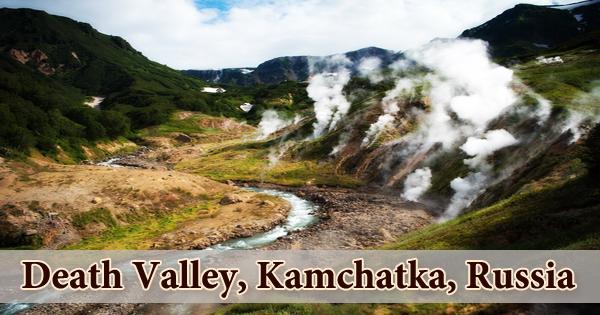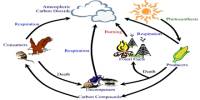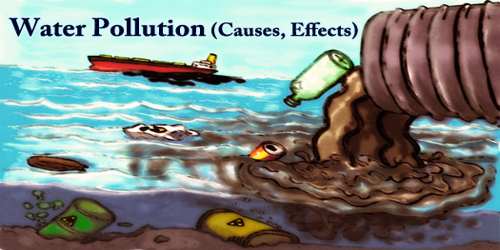Earthquake
Definition
Earthquake is a sudden movement of the Earth’s lithosphere (its crust and upper mantle). Earthquakes are caused by the release of built-up stress within rocks along geologic faults or by the movement of magma in volcanic areas. They are usually followed by aftershocks. It is also known as a quake, tremor or temblor.
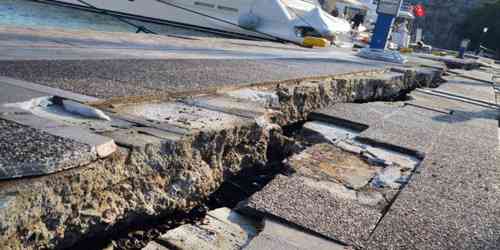
At the Earth’s surface, earthquakes may manifest themselves by a shaking or displacement of the ground. Sometimes, they cause tsunamis, which may lead to loss of life and destruction of property. An earthquake is caused by tectonic plates getting stuck and putting a strain on the ground. The strain becomes so great that rocks give way by breaking and sliding along fault planes.
The shifting masses send out shock waves that may be powerful enough to –
- alter the surface of the Earth, thrusting up cliffs and opening great cracks in the ground and
- cause great damage … collapse of buildings and other man-made structures, broken power and gas lines (and the consequent fire), landslides, snow avalanches, tsunamis (giant sea waves) and volcanic eruptions.
The word earthquake is used to describe any seismic event whether natural or caused by humans that generate seismic waves. Earthquakes are caused mostly by rupture of geological faults, but also by other events such as volcanic activity, landslides, mine blasts, and nuclear tests. An earthquake’s point of initial rupture is called its focus or hypocenter. The epicenter is the point at ground level directly above the hypocenter.
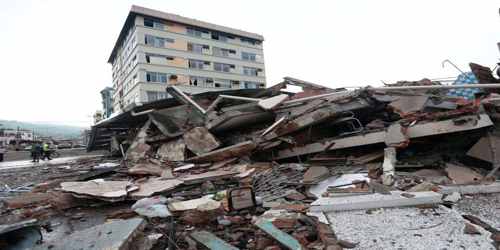
Occurrences and Classifications of Earthquake
Earthquakes may occur naturally or as a result of human activities. Smaller earthquakes can also be caused by volcanic activity, landslides, mine blasts, and nuclear experiments. Most naturally occurring earthquakes are related to the tectonic nature of the Earth. Most of the earthquake’s energy is used to power the earthquake fracture growth and is converted into heat, or is released to friction. The majority of tectonic earthquakes originate at depths not exceeding tens of kilometers. Earthquakes may also occur in volcanic regions and are caused there both by tectonic faults and by the movement of magma in volcanoes. Such earthquakes can be an early warning of volcanic eruptions.
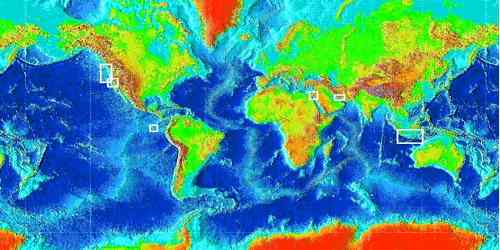
Most of the world’s earthquakes (90%, and 81% of the largest) take place in the 40,000 km long, horseshoe-shaped zone called the circum-Pacific seismic belt, known as the Pacific Ring of Fire, which for the most part bounds the Pacific Plate. Massive earthquakes tend to occur along other plate boundaries, too, such as along the Himalayan Mountains. With the rapid growth of mega-cities such as Mexico City, Tokyo and Tehran, in areas of high seismic risk, some seismologists are warning that a single quake may claim the lives of up to 3 million people.
The strength of the earthquakes is changing according to its distance. In XİX century there were attempts to classify earthquakes according to their damages to our lives, geological environment and etc.
In 1902 in Italy by the Juzeppe Merkali has been adopted the scale of 12 points. In 1931 the American scientists Q.Vud. And F. Nyumen and in 1956 the Richter has made a few changes in that scale. And now this scale is called modified Merkalli and Richter scale (MMI). From the 1964 in Europe and in Ex Soviet Union where Azerbaijan was one of the members has been accepted the 12 unit European MSK Scale.
The following 12 points seismic intensity scale is given above.
- 1 point- hardly felt
- 2-points- hardly felt. IS felt by the people in the constant position
- 3- points Weak Vibrations. The earthquake is felt by some people inside and few people outside the buildings. It is like the passage of the vehicle. The careful people are noticing the vibration of the things in the upper floors.
- 4- points Obvious vibrations- The earthquake is felt by outside and inside people. The building is wholly vibrating. The sound of the squeak of the doors and windows the peal of the floors and walls are heard. The substances with the water are pouring down to the surface. It is caused a small damages in the village houses from the village raw brick and small cracks in the plasters. Plasters are settling down with big pieces. And etc
- 5- points. The earthquake is felt by the most people. The asleep people are awaking. The buildings are shaking. Some of the non stable objects are falling down and. The open liquid substances are pouring down and sliding.
- 6-points. The earthquake is felt by the most people outside and inside the buildings. The wild animals are escaping from their places. With big blocked and panel type houses and in and in ordinary brick buildings and in villages buildings made of a raw brick are made a light damages and crack in the plasters. The plaster is falling down with many parts.

- 7-points. The buildings are damaging. The people are running out. The drivers are feeling the earthquake during the riding. In the brick houses and it causes many damages to the houses made with big blocks and panels. In some cases in the sharp hills of the ways in causes landslips. The waves are formed on the water. The directions of the springs are changing.
- 8-points. The Buildings are damaging seriously. It causes a big panic. The branches of the trees are breaking down. The lamps are also damaging. In the Ironic betonic hull buildings medium damages, in some of them a seriously damages and the crack on the walls are appear. In many cases the houses are totally ruined. The Pipelines are breaking down. It causes a fire in many places. The water is coming or going off from the wells. İt causes the damages. In some of these stations are the parts of the plasters are falling down.
- 9 points –The buildings are seriously damaging. The big and the panic and big alarm are caused.
- 10- points. The monuments and statutes are falling down. Causes a big change on the ground. The brick houses are damaging and ruining. The big tsunamis appear on the water. The railway ways are bending. The width of the ground cracks reaches 10 cnmtrs.
- 11 –points. All buildings are ruining. The village houses made from raw brick are collapsing. It causes mountains collapse.
- 12-points. It causes the changes of the relief. All the buildings and apartments are collapsing the way is becoming useless.
A recently proposed theory suggests that some earthquakes may occur in a sort of earthquake storm, where one earthquake will trigger a series of earthquakes each triggered by the previous shifts on the fault lines, similar to aftershocks, but occurring years later, and with some of the later earthquakes as damaging as the early ones.
Reference:

